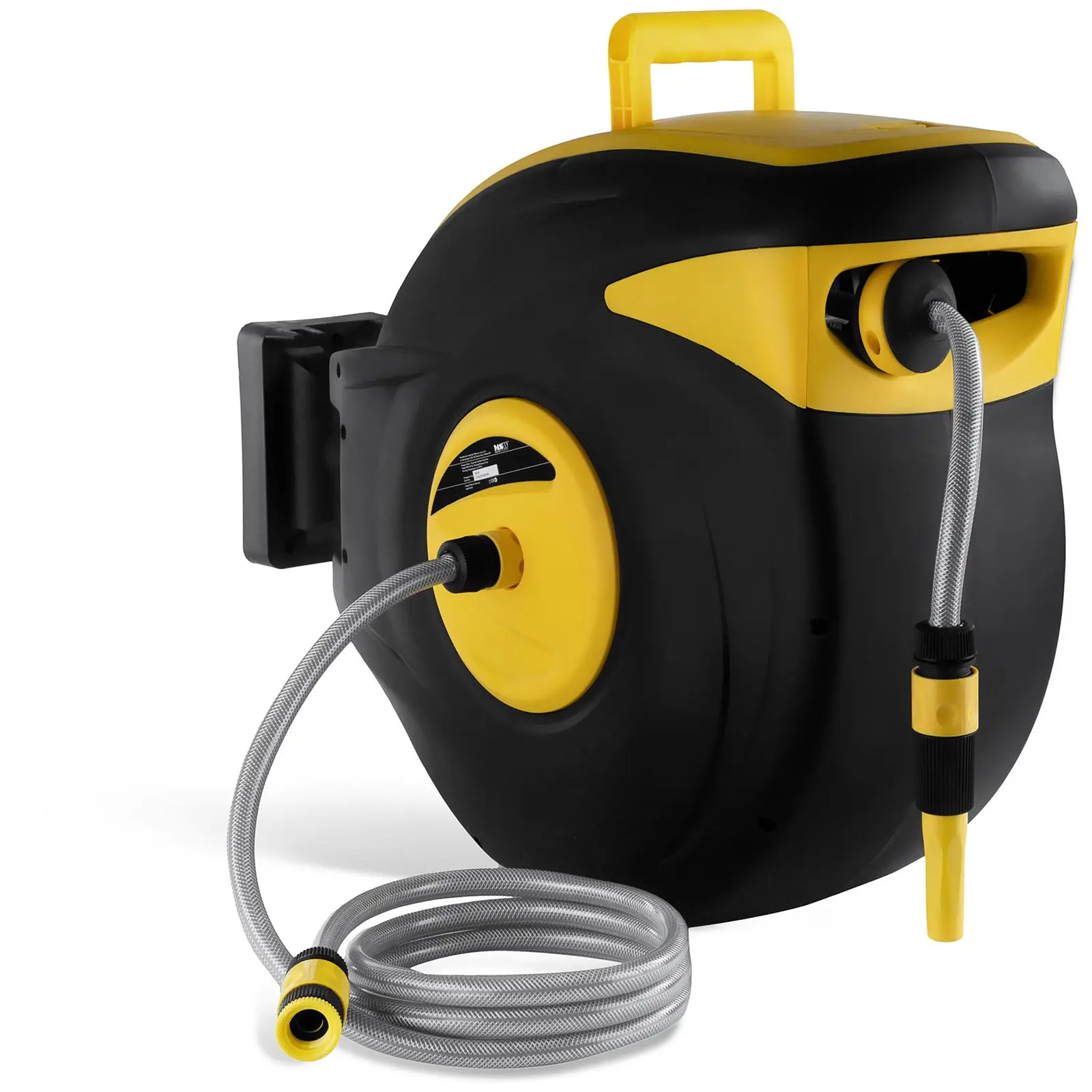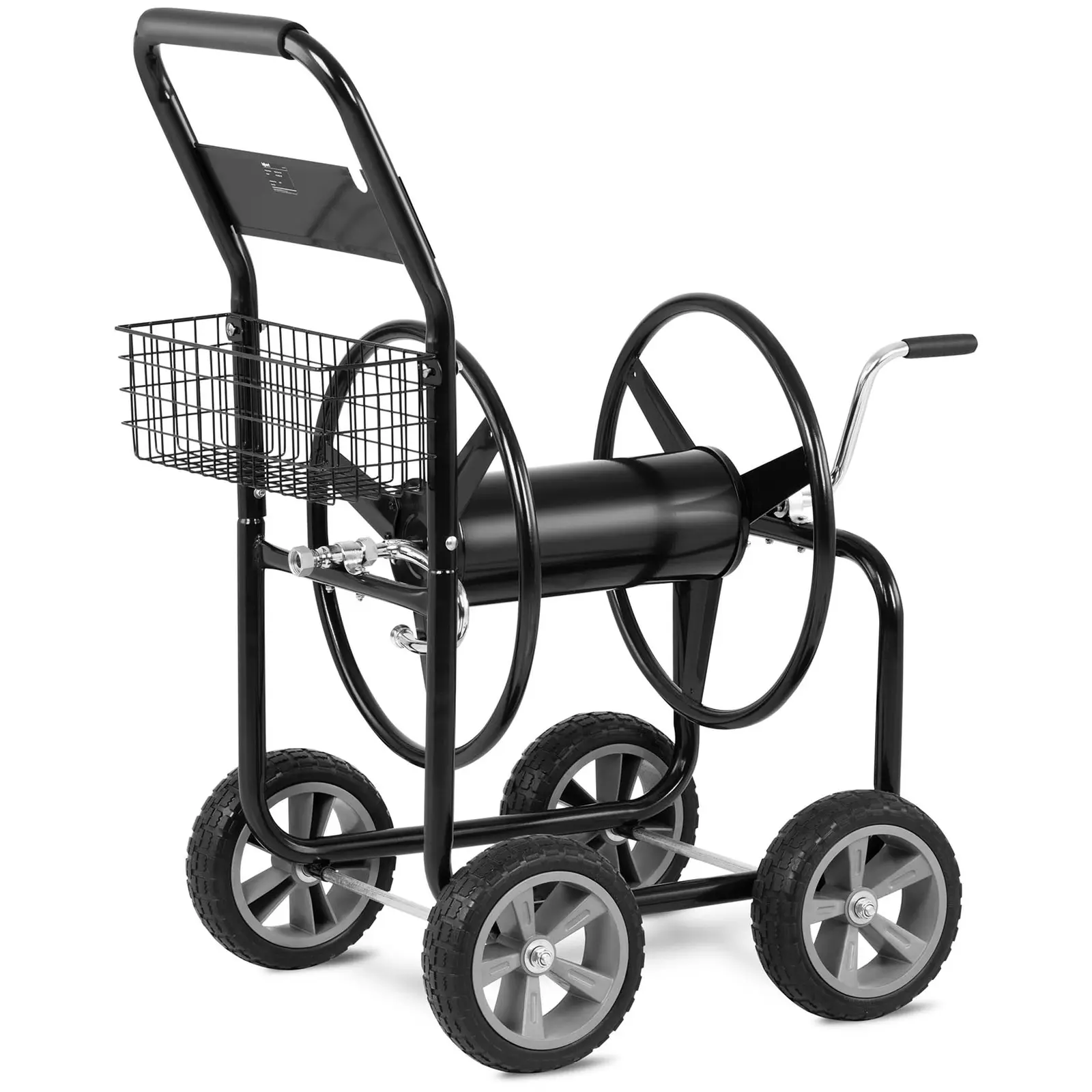Do you want to look after the environment and reduce your water bills at the same time? Find out how to install a rainwater tank. Such an installation will collect rainwater, which can then be used, for example, for watering the garden or cleaning.

Do you want to look after the environment and reduce your water bills at the same time? Find out how to install a rainwater tank. Such an installation will collect rainwater, which can then be used, for example, for watering the garden or cleaning.
- Is installing a rainwater tank worth it?
- A rainwater tank – where should you start?
- How big should the rainwater tank be?
- What will you need to use the rainwater in your garden?
- Above ground rainwater tanks
- Underground rainwater tanks
- How can you connect a rainwater tank to the gutter?
- Rainwater tanks as part of your landscape design
- How to fit a rainwater tank – summary
Is installing a rainwater tank worth it?
Basic calculations show that it is worth installing a rainwater tank. Houses with a roof area of 200 square metres can acquire as much as 200 cubic metres of rainwater in one year, water that can be used for household purposes (e.g. watering plants). You can therefore save even 50% of the drinking water you would use during this time. And the indicated roof area is a standard roof size that applies to medium-sized houses. In the case of larger roof areas, the amount of rainwater saved will increase proportionally.
A rainwater tank – where should you start?
If you are wondering where to start, it probably means that you have already decided to build a rainwater tank. So how what do you need to do to build an installation that will meet all the legal requirements? This is where it gets a bit tricky. In the UK, the regulations regarding non-potable water supplies are tied in with building regulations, which makes sense, because rainwater is usually collected and used at home or in commercial buildings. The legal instrument is the national building regulations and Water Supply (Water Fittings) Regulations 1999.
Rainwater that is collected and adequately filtered is clean and clear, and therefore sufficient for certain uses. But this does not mean it is totally free from contaminants. Harvested rainwater should run through a totally separate set of pipes, use different and unconnected storage tanks, and all pipes and fitting should be clearly marked as ‘Not Drinking Water’. Harvested rainwater can be used for flushing toilets, laundry or for washing your car or watering the garden.
It should not be used for drinking or cooking, washing dishes, bathing and personal hygiene. In exceptional cases in some remote areas rainwater or groundwater may be utilised as a source of drinking water. This would require disinfection to ensure the water is suitable to drink. In commercial buildings, untreated rainwater can also be used for a variety of other uses; cleaning, cooling, process water etc.
Because of our historically plentiful rainfall in the UK, the authorities have generally been less concerned with promoting rainwater usage than in some other countries, such as Australia or the USA. However, with the our changing climate affecting also the UK, there may be a growing incentive to consider a similar approach here as well.
-
Watering Computer including humiditysensor – 2 outputs – duration 5 s – 360 min – frequency up to 7 days
-
Power Trowel – 6.5 hp – 4,370 rpm
1,049.00 GBP829.00 GBP -
Tamping Rammer – 34.5 x 28.5 cm – 10 kN
1,129.00 GBP949.00 GBP -
Plate Compactor – forward-running – 50 x 35 cm – 10.5 kN – incl. rubber mat
How big should the rainwater tank be?
In order to determine the best size of your rainwater tank, consider what size will be appropriate for your needs. In order to make the right choice, appropriate data should be collected. Start off by analysing the average annual rainfall in your region. Its value is publicly available on the Internet so that everyone can have access.
Then calculate the roof area of your house. When calculating this value, take into account the plan view of the roof. This is important because the larger the roof, the more water you can harvest, and therefore a larger rainwater tank will be needed. Before purchasing anything, you should be prepared with the above-mentioned data.
What will you need to use the rainwater in your garden?
Water collected in rainwater tanks can be used in two ways. One of them is various types of cleaning or other jobs that require water. The second is watering plants, e.g. in your home or garden. Bear in mind that rainwater becomes contaminated when it comes into contact with the roof, due to the bacteria. Therefore, if you use rainwater is your household, you should use filter systems specifically designed for this purpose.
If the water from the rainwater tank is used only for watering plants, you will not need any additional filters, although a garden pump as well as a pressure hose will definitely come in handy. The pump will enable the water to drain from the tank. The hose, on the other hand, will be used to effectively sprinkle your garden. However, let’s make sure that it is of the right length.
Above ground rainwater tanks
Rainwater tanks can be of two types. The first of them are above ground tanks, which are installed by the facade of the building. It is extremely important that they have as much shade as possible. Above ground tanks can have a capacity of 300 to 2000 litres. The water flows into them through a pipe.
This type of solution is mainly applied in the case of rainwater that will be used only for watering the garden. Some tanks are even finished as a decorative element, shaped like an old tree trunk or an ancient bowl.
Underground rainwater tanks
The second type of rainwater tanks are underground tanks. As their name implies, they must be dug into the ground. However, this is not always the case, as in some cases they can also be placed in the basement. A characteristic feature of underground rainwater tanks is that the water that flows into them is directly from the gutter. The filters attached to them allow the water to be used not only for watering garden plants, but also for domestic work.
Underground tanks are also bigger than their above ground alternative. The smallest ones are able to hold 2,000 litres of water.
How can you connect a rainwater tank to the gutter?
A key feature of rainwater tanks is their connection to the gutter. This is usually done by installing a special tube which is inserted into a hole drilled in the gutter, a solution that allows water to flow directly into the tank. And it is not as tricky as it may sound. You simply need to follow the instructions attached to the purchased watertank and use an appropriate construction machinery, for example drill.
Rainwater tanks as part of your landscape design
A rainwater tank is a great way to provide yourself free water for watering plants and lawns, so why not incorporate it in your garden design? Even the simplest installation, which will include a garden pump and hoses, will provide you with water for all your garden watering needs. A rainwater tank can also be a great solution for filling ponds, and washing your car or even the facade of your house.
How to fit a rainwater tank – summary
Using rainwater for household use is a great way to lower your monthly bills. By collecting rainwater you also contribute to the natural environment. For both of these reasons, more and more people switching to this type of solution, using rainwater for household needs and for irrigating their gardens.
When choosing the right capacity, remember to take into account the annual rainfall rate, as well as the roof area of your house. Choosing the right tank, take into account the possibility of choosing one of two options – above ground and underground rainwater tanks. Your decision will determine not only the scope of work necessary for fitting the system, but also the intended use of the collected water.
However, before getting started, check the legal regulations regarding such systems.










Share